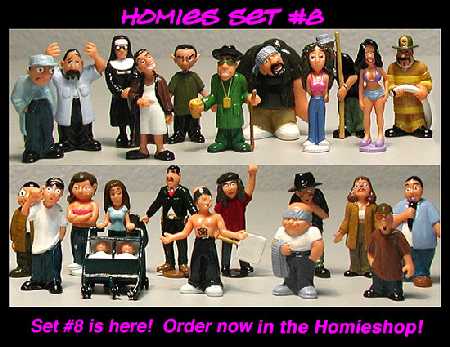

Homies have a curious position in the toy industry. People tend to love them or hate them, or not be aware that they exist. Homies can be spotted on eBay, in Snoop Dogg's video for "From tha Chuuuch to da Palace," and in vending machines across the country. The playful 3D thumbnail sketches of Chicano lowrider culture have become quite a presence since their debut. What parent, after all, would want his or her child playing with Payday, who wears a gold dollar-sign medallion, smokes a cigar, and has cash sticking out of his pockets? Or Wino, a rumpled Homie in a stocking cap who clutches a bottle of cheap wine in a paper bag? Detractors see Homies as itsy-bitsy toys that glamorize gang lifestyle.

Since their arrival in 1998, Homies-plastic figurines under two inches tall-have drawn criticism for their decidedly urban, inner-city Latino look. There's a whole barrio in there, and one by one, they funnel out of the vending machine's opening at the drop of two quarters. Zoot suits, trench coats, baggy pants, basketball jerseys, leather jackets-their attire is as varied as their facial expressions. Some of the characters are grimacing and beefy, like linebackers others are grinning, thin, and wily. The vending machine in the middle holds G'd out B-boys, scantily-clad fly girls, pit bulls wearing sunglasses, and policemen eating donuts, all piled up on top of each other, encased in plastic bubbles.

The candy in these machines is bright, monochromatic, and simple. The vending machine to the left is full of gumballs in the shape of watermelons the one to the right hawks grape jawbreakers. With Homies, gangsta is in the eye of the beholder "Willie rolls on a customized Lowrider wheelchair that the Homies chipped in and bought for him," explains Where the Heart Is is an ex-gangster who works as a handicapped-youth counselor. Life Lessons: According to Homies lore, Willie G.


 0 kommentar(er)
0 kommentar(er)
